THE HIGHLAND SOCIETY
OF LONDON
On the 28th May 1778 a group of twenty-five influential Scots met in a coffee house in Spring Gardens between St James's Park and The Mall to inaugurate a society for social and charitable purposes that would also succeed in promoting an “improved” notion of “Scottishness”.
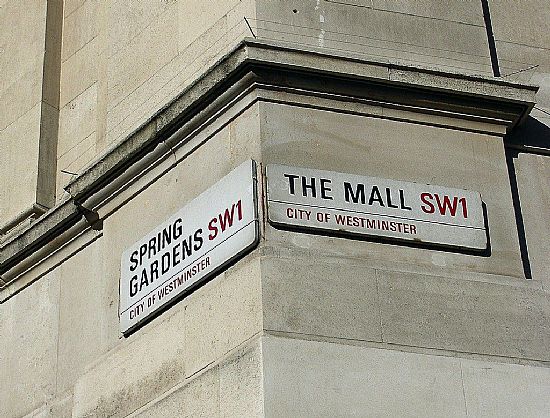
There was another Spring Gardens in Vauxhall with which this one is easily confused. Theodore Hook’s remarks about “pretty pastry cooks” and a “piazza” though often quoted with regard to this one clearly belong to the other larger pleasure gardens.
The Westminster Spring Gardens were, by this time, almost completely built over by fine town houses and key business premises on a long curved street. Today much of its central portion lies under Admiralty Arch and, in 2021, a flat in one of the remaining houses is being advertised for sale at over £2 million to buy or for rental at over £8,000 per month for the privilege of having just two bedrooms within walking distance of the seat of government.
Even then it was prime estate just because of its proximity to both Parliament and St James’s Park. The earliest and longest-lived London Scottish banking house, Drummonds, had its premises here.
Unsurprisingly the first members who met in Spring Gardens had deep pockets. Later meetings shifted to a venue near the Scots Kirk in Covent Garden.
The name of the chosen coffee house in Spring Gardens is not mentioned and there may well have been several. One we know the name of was Brown’s Coffee House which certainly had some very large rooms for meetings where it could display vast dioramas of battles on land and at sea. (cf newspaer advertisements held by the Bodeleian Library in Oxford) Although history painting was considered the summit of artistic achievement, portraiture was actually both more profitable and fashionable. In the early nineteenth century Jane Austen and her brother Henry came to a water-colour gallery in Spring Gardens looking for portraits that might fit her characters in “Pride and Prejudice”. She found one she thought just right for "Mrs Bingley" but, unsurpringly, not one for "Mrs Darcy".
London coffee house and Edinburgh debating society cultures blended effectively in this particular venture.
The London coffee houses were largely news sharing, dealing and government lobbying venues but they were also the venues for some wealth display through extravagant entertaining.
The Edinburgh Societies usually had some focus in intellectual or charitable purposes but they were also notorious for their notions of manliness in the excessive consumption of food and drink - a tradition that was carried to the North Westers' rendezvous at Fort William in Canada. The long periods of isolation and the heady sight of the profits they had made certainly make this more understandable in that context.
The meeting places of both Edinburgh and London offered men the chance to establish social status, make useful contacts and create networks of common interest. Open socialising could create dangerous opportunities for rivals to indulge in commercial spying and insider trading. Closed societies, ostensibly for charitable purposes, were perhaps seen as somewhat safer. The Freemasons became the most closely guarded secret society. The Highland Society of London was highly selective about its members but more open about is dealings.
An indication of the efficiency of the news-sharing process of the coffee house culture that made London such a honeypot for business is that just seven days later the twenty-five members had expanded to seventy.
Although it is not possible for me to decipher the identity of all the members in the early days of the Society a considerable number appear to have come from this part of Scotland. They included :-
At the original meeting 28th May 1778:
Hon General Fraser, of Lovat, elected President
Brigadier General Calder (i.e. Cawdor) (John Campbell of Cawdor Castle actually born on his other estate in Wales, currently MP for Nairn)
John Fraser, of Achnagairn (near Inverness. For an introduction to these Frasers see Marie Fraser of Canada’s article “A family of merchants” on Electric Scotland)
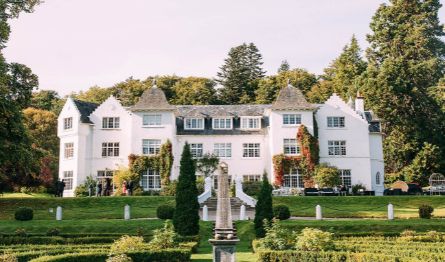
Achnagairn House today. Photo from their website
John Mackenzie, Temple, the very active Secretary of the Society for many years. (His estate was Lentran not far from Achnagairn)
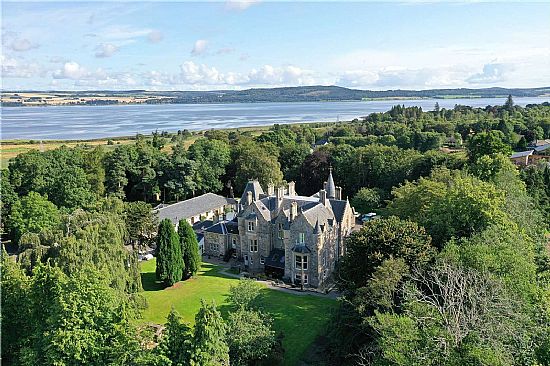
Lentran Estate near Inverness, the home of the Secretary of the Society. Photo: Savills Estate Agency
John Macpherson (Sir John Macpherson Bart). Although born on Skye his career and that of James (Ossian) Macpherson of Balavil are closely entwined.
On 4th June 1778 the membership included:-
James Baillie of Dochfour and the West Indies, an MP. Baillie had properties in Grenada, Guiana and St Lucia. He had returned to Britain about this time.
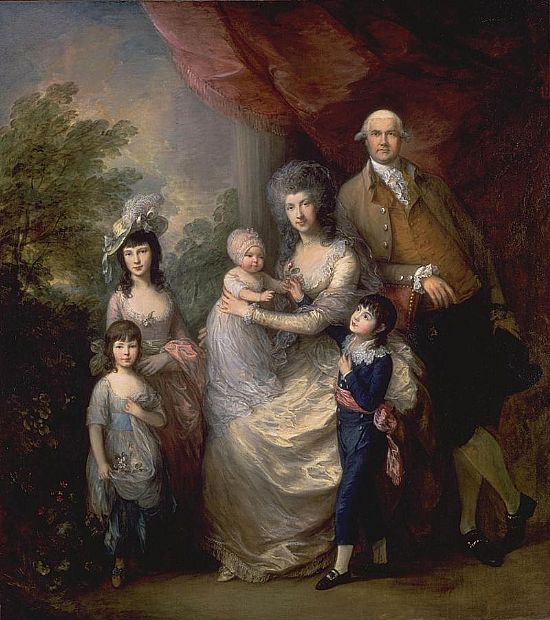
James Baillie and his wife Colin and their children as painted by Thomas Gainsborough. Tate Gallery
For more informationon the Bailies please see David Alston's website "Slaves and Highlanders"
Lord Adam Gordon, Golden Square, younger son 2nd Duke of Gordon and Lady Henrietta Mordant
———Fraser, Canada (This cannot be Simon Fraser senior of Culbokie because he was in prison and near death in Albany nor Simon Fraser jnr as he was only born in 1776. Perhaps this was Simon Fraser jnr’s uncle, John Fraser a Captain in the Fraser Highlanders under General Wolfe who married Marie Claire Deschambault in Canada and was instrumental in the Culbokie/Albany Frasers’ move into Canada)
Dr Grant, Lime Street (likely to be William connected with Elchies, a fashionable and respected London physician).
Robert Grant, Warwick Lane, (Hillockhead and later Wester Elchies, the merchant trader with an extraordinary private life who claimed he was responsible for launching many a local lad on his career abroad). See his mini bio on this site.
The Duke of Gordon, Grosvenor Street (a major landowner in this area and beyond)
Col. Hugh Grant of Moy (a Sheuglie Grant. He had purchased Moy from Sir James Grant)
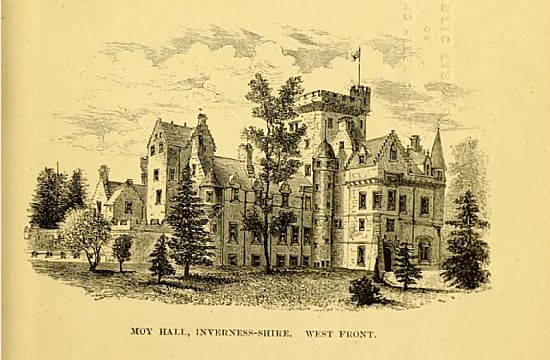
This is actually a slightly later construction as the Castle accidentally burnt down about this time. The present house is an even later building in a fine wooded setting.
Simon Fraser, King’s Arms Yard, Coleman Street.
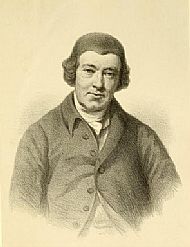
Simon Fraser of Ness Castle.
Another of the confusing Simon Frasers. For a clear account of this one, his relations and the portrait please see David Alston's website Slaves and Highlanders and the UCL website Legacies of British Slavery. “Simon Fraser of Ness Castle (c. 1726-1810), London merchant of 3 King's Arms Yard, Coleman Street, London… a director of the East India Company…” Like John Baillie, he also owned estates in British Guiana.
The triple connections between India, West Indies, and Canada begin to become very clear amongst the Frasers but they also apply to other family group interests like those of the Grants.

Kenneth Mackenzie, Earl of Seaforth "The Little Lord" who is painted on one occasion listening to the Mozarts playing in his appartment in italy and at another time amongst a group of earnest young men that included Joseph Banks, botanist
The Earl of Seaforth, Member of Parliament, mostly associated with Ross-shire at this time but he also had Nairnshire connections. Known as “The little Lord” because of his height he had gained his title only in 1771 and it became extinct temporarily on his death in August 1781. He is best remembered for raising the Seaforth Highlanders. They were embodied in Elgin in 1778. A recent biography of him by Tony Scotland is entitled rather revealingly (at least of his biographer's assesment of him): Gimcrack: A Rake's Progress.
Lewis Cuthbert, Princes Street, Cavendish Square, was an attorney from the extensive Castlehill family who had considerable interests in Jamaica but very poor health and was possibly over-ambitious because at one stage he became bankrupt. He was temporarily in Britain at the time to recover his health.
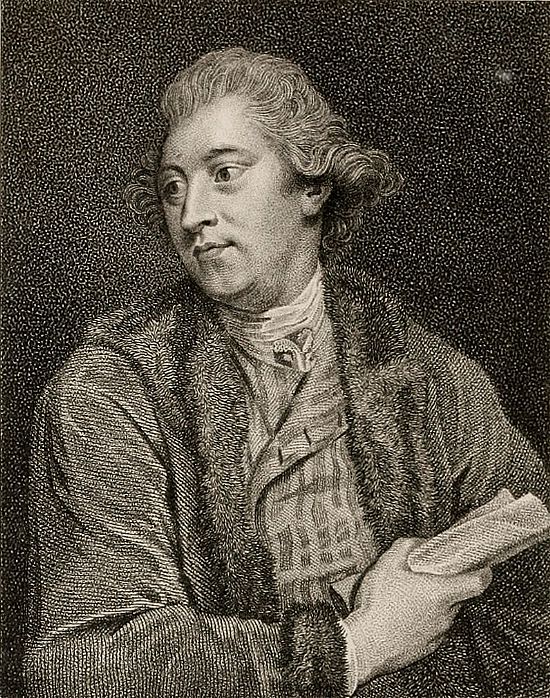
The Gaelic Poet responsible for The Ossian Cycle, James Macpherson. This engraving is thought to be based on a Reynolds portrait. Courtesy of The National Library of Scotland.
James Macpherson, Manchester-buildings. This location was described by his biographer, Bailey Saunders in 1894, as being "between Cannon Row and the Thames". Saunders says that it was a street “Chiefly inhabited by bachelor members of parliament and journalists”. It was in Westminster so this is hardly surprising.
Macpherson created the greatest stir by his attempts to re-create Gaelic heroic tales from fragments of Gaelic poems he had collected. They were deeply influential throughout Europe and the British colonies and one of key texts that inspired the European "Romantic" movement. Eventually the Highland Society undertook an investigation into their authenticity though they had clearly promoted their ethos. Macpherson achieved fame but certainly not his fortune from the publication. With the help of his Skye relative, Sir John Macpherson, he got the lucrative job of agent for the Nabob of Arcot. It was this that allowed him to buy and develop the estate of Balavil/Belleville near Kingussie.
James Grant of Shewglie and India. He was a member of the East India Company and had taken up an appointment in Bengal in 1768 with the help of his uncle Alexander Grant.
Elected to the Society on December 12th 1778 were:
Simon Mactavish of Canada and of Garthbeg, Stratherrick, a key player in the story of the early Nor-Westers in the Canadian fur trade.
Charles Mackintosh of Gibraltar, (? Raitts, Badenoch) and Georgia.
Lauchlin Mackintosh of Gibraltar definitely born at Raitts, Badenoch, he moved with his family to settle in Georgia in 1736.
The achitects James and William Adam, "of the Adelphi" also joined at that time which must have been good for business and for influencing the changes in architectural tastes with the introduction of “Grecian” motifs and styles.
In March of the following year another William Grant joined. He is identified by Sinclair as the one who would become Master of the Rolls. He is, therefore, part of the Tomore, Elchies network of merchants and lawyers.
June 1779 saw the arrival into the influential circle of an Alexander Grant. Sinclair does not identify him but the address he gives for him in Billiter Street shows this was the highly successful international merchant Alexander of Dalvey who would soon get the family title restored. (see the brief article on this website)
There are obviously many others who joined over the years but this is surely enough to indicate just how actively involved this area of Scotland was in The Highland Society of London.
The stated aims of the Society at its foundation were
1) To establish and support schools in the Highlands and North Britain
2) To relieve distressed Highlanders at a distance from their native home
3) For preserving the antiquities and rescuing from oblivion the valuable remains of “Celtic” life.
The Society was eventually incorporated in 1816. They had the significant political backing by that time of the Prime Minister, the Earl of Bute.
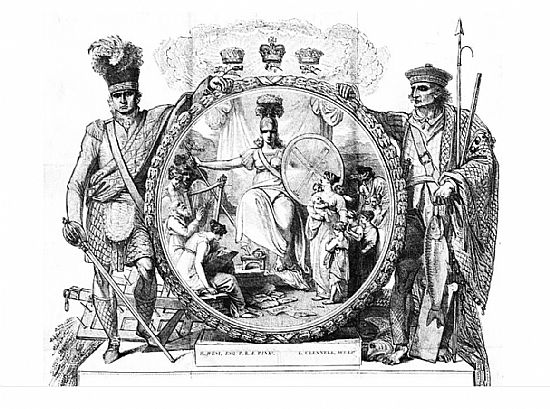
The design of the emblem of the Society is well worth looking at in detail to decipher the image that these men wished to present of the civilised, brave, commited highlander. It would become, indeed, the "brand image" of "the Scot" not just the Highlander throughout the Empire.
It shows a mixture of idealised Greco-Roman references and Scottish political ambitions presented with calm assurance. As always, an image is open to varied interpretations. Here are some things that I read in it
Britannia is enthroned like Pallas Athena within a circle perhaps representing the globe. Her helmet is ceremonially plumed. Her shield carries not the Gorgon’s head but the cross of St Andrew. Her right arm seems to stretch imperially to the farthest West. Her spear appears to be a rod perhaps symbolising the "civilising" power of the law she will implant wherever her rule is extended. Her right foot rests on a footstool which has long been a symbol for enemies subdued.
Ossian, old and blind, sings to her heroic tales of Fingal his father, whilst Malvina mourns the loss of her husband and Fiona (an idealised female actually created by Macpherson) is at his side. The introduction of a “sensitive feminine" response to death into the epic tradition must surely be one of the reasons Ossian became so popular across Europe. It is certainly one of the aspects that captured the imagination of Mrs Grant of Laggan whose work on her American childhood is so different in tone from her Ossian influenced Letters from the Highlands. Henry Mackenzie, who was married to the daughter of the Laird of Grant, would explore something of this same emphasis on heightened sensitivity in his novel The Man of Feeling and Jane Austen's Sense and Sensibility would later present this whole social conflict of the balance between emotion and rationality from a somewhat later feminine point of view.
On Britannia’s left (East) more women seem to be coming to offer their children for her service.
Triple crowns surmount the global medallion, which has two supporters.
The left one is the Scottish soldier in Romanised short fighting kilt to show his fine athletic legs with his belted plaid tossed over his shoulder ready to go anywhere. His pose and face appear to be at rest but he only has one foot on the ground the other is slightly raised and ready for immediate response. His sword remains unsheathed even though it is safely pointing downwards towards the ground.
The other supporter evokes the calm, enlightened philosopher. Tartan is on display in his long enveloping cloak. His bonnet is worn squarely on his head not at the jaunty angle of the Scottish soldier or the crofter. His fishing tackle associates him clearly with Isaak Walton’s Piscator and the educating spirit that this interaction with nature cultivates. There is perhaps an irony in this since Piscator castigates “mony-getting-men” as those that “spend all their time first in getting, and next in anxious care to keep it; men that are condemn’d to be rich, and always discontented…poor-rich-men”. Perhaps the key words here are “all their time”. Perhaps too it signals that these men now seek to devote at least some of their wealth, time and energies to charitable works. The salmon may also represent the natural riches that Scotland can offer the rest of the world.
The motto of the Society “Clan na Gael " incorporates all members into a "family" of Gaels. Rather ominously that motto would be adopted by the secret society of the Irish Fenians in Philadelphia in 1860s. Here, however, it is surely to be seen merely as an expression of cultural solidarity.
“The quantum of happiness”
Undoubtedly the genius mind involved in this whole "improvement" project was that of Sir John Sinclair.

Highly intelligent, widely-travelled and deeply socially-concerned he was in the privileged position of being a great Caithness landowner. Much attention has been given to his work in furthering agricultural improvement. That, for him, was only a part of a much greater dream of social improvement.
Today we owe him an emormous debt for instigating the first internal survey of the country through a questionnaire sent to every parish minister about their parishes i.e. The First Statistical Account. In so doing he also introduced the word statistics from the German into English but gave it a slightly different meaning. We tend to forget that his aim in this was to get some measure of “the quantum of happiness” in the country. His whole idea of “improvement” was, indeed, intended to increase “happiness” which he equated with economic productivity and education.
Noble dreams sometimes result in unpredicted nightmares however and many people were obliged to leave land which was considered incapable of “improvement”. Emigration became a necessity for many with its good and bad consequences both at home and abroad. However, for many, emigration actually offered the golden opportunity for self-motivated and phenominally rewarding enterprise. With the emigrants went a sense of self-worth and identity as Scots.
No idealism could eliminate all the contradictions and limitations in our humanity and improvement around the world was not always a blessing as a result. Nevertheless with this new self-confident promotion of his human dignity to replace the humiliation of what seemed like the ultimate defeat by “England” at Culloden, the expatriate Scot, through conquest, land acquisition, law, commerce, bureaucracy and persistant physical labour and endurance, would establish a British Empire with a distinctively Scottish tone.
James Thomson’s “The Seasons. Autumn”
…in Misfortune's school
Train'd up to hardy deeds; soon visited
By Learning, when before the gothic rage
She took her western flight. A manly race,
Of unsubmitting spirit, wise, and brave;
Who still through bleeding ages struggled hard,…
To hold a generous undiminish'd state;
Too much in vain! Hence of unequal bounds
Impatient, and by tempting glory borne
O'er every land, for every land their life
Has flow'd profuse, their piercing genius plann'd,
And swell'd the pomp of peace their faithful toil…
Oh! is there not some patriot, in whose power
That best, that godlike luxury is placed,
Of blessing thousands, thousands yet unborn,
Through late posterity?…
How all-enlivening trade to rouse, and wing
The prosperous sail, from every growing port,
Uninjured, round the sea-encircled globe;
And thus, in soul united as in name,
Bid Britain reign the mistress of the deep?
This is a very selective account of The Highland Society of London. You may liike to look at these texts available online to get a wider perspective.
It possible to find volumes about the history of the London Society and their transactions compiled by Sir John Sinclair on line for anyone wishing to engage in further study which could be very rewarding as there are so many different angles from which to view this venture and the people involved.
Katie L. McCullough: Building the Highland Empire: The Highland Society of London and the Formation of Charitable Networks in Great Britain and Canada 1778-1857. PhD thesis presented to Guelph University, Ontario September 2014
Archibald John MacDonell: The Highland Society of Canada. 1844

